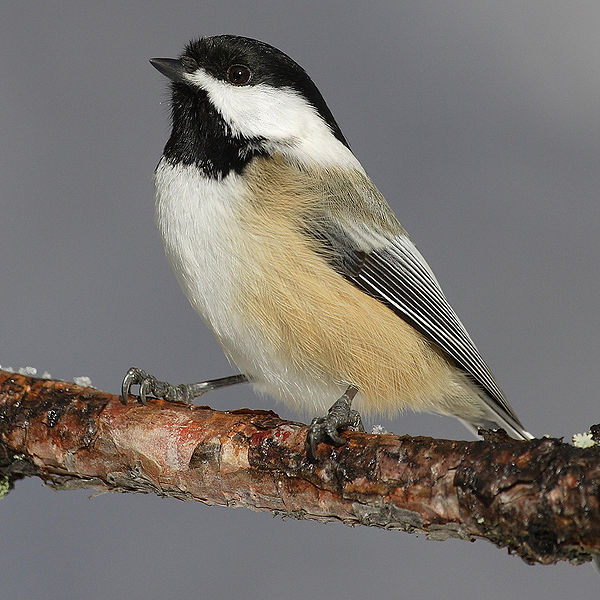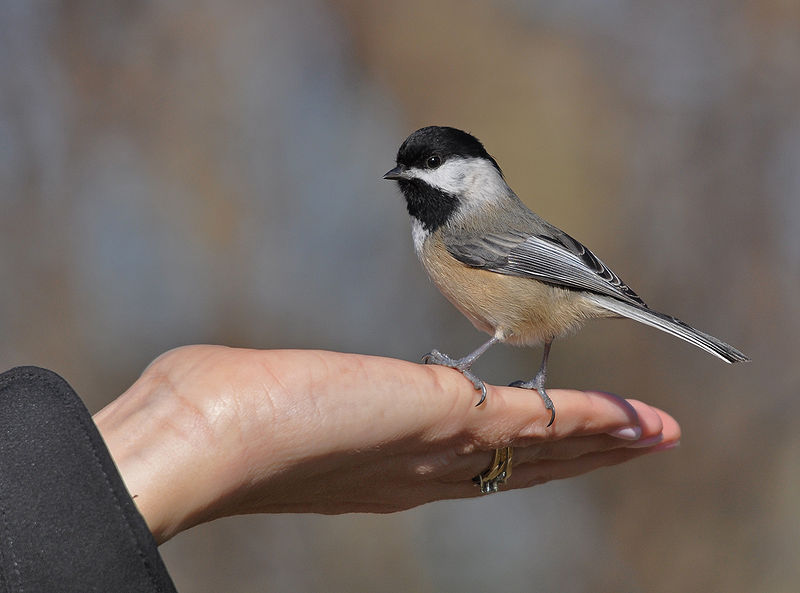|
|
black-capped chickadeePoecile atricapillus
Identification:
This little black and white bird is a favorite with its black cap and “bib,” short beak, gray and black back, and white front with subtle tan under the wings. Behavior: The Black-Capped Chickadee is an active bird. It grabs a seed from the feeder and flies off to crack it open, and often it flits high up in the trees gleaning insects. The chickadee has an incredible memory, recalling the locations of stored food in hundreds of spots, partly because it is able to replace old neurons in the brain with fresh ones. This is an unusually tame, curious, and friendly bird with its cheerful “chickadee” call. What brings it to the SBG? Food, cover, and nesting sites. They are cavity nesters and use old cavities or sometimes excavate their own, especially preferring alder and birch. They are found in forest habitat, but also frequent parks and suburban backyards. Their diet in wintertime includes nuts and seeds, but most of the year it is primarily insects. The SBG provides plenty of insect food and probably nesting sites in the wooded periphery of the garden. When can I see it? Year-round. |


